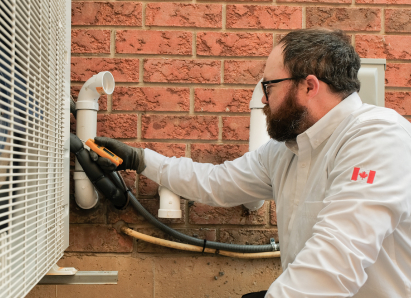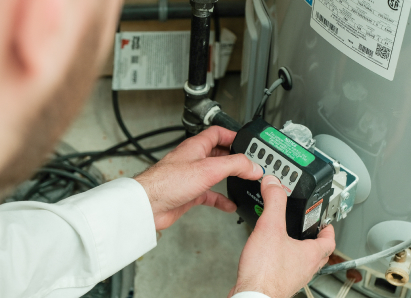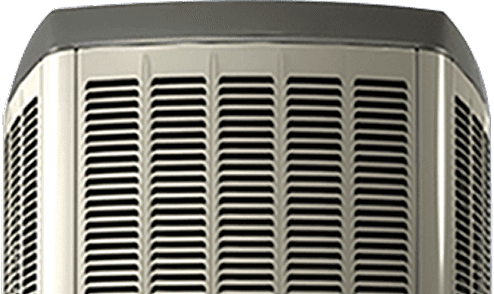Heating and Cooling Services Ottawa Homeowners Count On
For over 39 years, Anchor Home Comfort has delivered trusted heating and cooling services to families across Ottawa and the surrounding area. Our fully certified technicians make sure your home stays comfortable through harsh winters and humid summers—with honest service and reliable results.
Whether you need a furnace installed, your air conditioner maintained, or your full HVAC system evaluated, we offer expert HVAC service that gets it done right. No delays, no guesswork—just dependable care, backed by our satisfaction guarantee.

For more details, read our reviews:
Read our reviewsFind a Home HVAC Technician Near You:
Proudly serving Ottawa and surrounding communities, Anchor Home Comfort’s HVAC technicians offer reliable heating, cooling, plumbing, and indoor air quality solutions wherever you call home.

We know that time is critical when things go wrong.
When something goes wrong with your heating, cooling, plumbing, or electrical system, you can’t afford to wait. That’s why the team at Anchor Home Comfort is always prepared to respond quickly to emergencies in Ottawa and the surrounding communities. Whether it’s a freezing winter night or a long weekend in July, we’re committed to arriving within four hours—no matter when you call.
Our licensed technicians are trained to handle a full range of home service needs. From no-heat furnace issues to failed AC units, backed-up drains to electrical outages, we bring the tools and expertise to solve the problem efficiently and safely. We know that disruptions to your comfort are more than just inconvenient—they’re stressful. That’s why we focus on clear communication, quality workmanship, and long-lasting results. When you need us, we’ll be there—on time and ready to help.
Find the Right HVAC Solution
Not sure where to start? We’ve got you covered. Our expert team takes the time to evaluate your home’s size, layout, and energy needs before recommending a solution. Whether you’re upgrading an outdated furnace, installing a new air conditioner, or planning seasonal maintenance, we tailor our approach to match your goals and your budget. With Anchor Home Comfort, you get guidance you can trust and service you can rely on.
Fast Service & Savings
Need service now and want to save in the process? Our responsive team ensures you’re never waiting long, while offering efficient service that helps protect your HVAC investment. Expect timely appointments and practical advice that keeps your home comfortable—and your wallet happy.
Experienced, Skilled & Ready to Help
We work with all HVAC brands and models and continuously train on the latest technologies to deliver the highest quality service in Ottawa. Whether it’s a weekend repair call or a full system upgrade, you can count on Anchor Home Comfort to get the job done right. Our experienced team provides dependable heating, cooling, plumbing, and electrical services backed by over 39 years of proven expertise.

Anchor Home Comfort proudly serves Ottawa and surrounding communities—including Arnprior, Clarence, Embrun, Bishop Mills, Vanier, and more—with certified technicians who understand the importance of comfort and reliability.
Ready for fast, professional service in Ottawa? Call Anchor Home Comfort at (343) 883-7228 or schedule your appointment online today.
Our HVAC Services
Staying comfortable in Ottawa’s unpredictable climate requires more than just a working system, it takes proactive care and expert service. At Anchor Home Comfort, we offer comprehensive HVAC services designed to keep your home running smoothly in every season. Our factory-trained technicians handle everything from installations and maintenance to urgent repairs and 24/7 emergencies.

Heating Services
Boilers
Complete installation, servicing, and emergency repairs for hot water and steam boiler systems.
Centralized Heating Systems
Full-service support for centralized heating solutions that provide even warmth throughout your home.
Furnace Installation
Accurate sizing and setup of high-efficiency furnaces for long-term performance and comfort.
Furnace Repair
Expert repair services for all furnace models—available 24/7 when you need us most.
Heat Pumps
Year-round heating and cooling systems that adapt to Ottawa’s seasonal extremes.

Air Conditioning Services
AC Installation
Precision installation of properly sized air conditioners to maximize comfort and efficiency.
AC Inspection
Preventative inspections that catch problems early and help reduce the risk of mid-season breakdowns.
AC Repair
Prompt, professional AC repair services for all brands and systems—including after-hours emergency support
Heat Pumps
Dual-purpose heat pumps that cool in summer and heat in winter for consistent comfort.
UV Air Purifiers
Integration and maintenance of air purification systems that eliminate airborne contaminants.
Humidifiers
Whole-home humidity solutions that promote healthier air and a more comfortable home.
Duct Cleaning
Deep-cleaning services that remove dust, debris, and allergens from your ductwork for improved air quality.

Water Heaters
Water Heater Repairs
Fast diagnosis and repairs for traditional and tankless water heaters of all makes.
Water Heater Installation
Complete removal and replacement of old water heaters with energy-efficient, professionally installed units.

Plumbing Services
Faucets
New faucet installations and repair services for kitchens, bathrooms, and laundry areas.
Emergency Plumbing Services
24/7 emergency repairs to stop leaks, fix clogs, and restore water flow fast.
Kitec Plumbing
Safe replacement of outdated Kitec piping with modern, reliable plumbing materials.
Plumbing Repairs
From minor leaks to major bursts, we provide complete repair services for your home’s plumbing system.
Sinks
Installation and maintenance of all types of sinks, including under-mount and top-mount units.
Sump Pumps
Protect your basement from flooding with expert sump pump repair and installation.
Toilets
Quick and clean toilet repairs or replacements done with minimal disruption.
Water Quality
Advanced filtration and softening systems to improve your home’s water supply and preserve your plumbing.
Hydro-Jetting
High-pressure water jetting that clears even the most stubborn clogs from your pipes.

Electrical Services
Electrical Installations
Safe and professional installation of lighting, outlets, switches, and more.
Electrical Panel Upgrades
Upgrade outdated panels to meet your home’s energy needs and improve safety.
Electrical Wiring
Expert rewiring for home additions, renovations, or bringing old systems up to modern standards.
EV Charger Installation
Installation of at-home EV charging stations with all required safety compliance.
Generators
Be ready for outages with generator installation, maintenance, and repair from Ottawa’s trusted backup power experts.
Ottawa’s Residential HVAC Experts
39+ Years of Proven Experience You Can Count On
Since 1986, Anchor Home Comfort has proudly provided expert HVAC services to homeowners across Ottawa and surrounding areas. With a reputation built on trust, craftsmanship, and long-term customer relationships, we’ve helped thousands of families stay comfortable through every season. Whether it’s a furnace upgrade, AC installation, or complex repair, our experience means you’re in capable hands—every time.

24/7 Emergency HVAC Service
Breakdowns don’t wait for business hours—and neither do we. Anchor Home Comfort offers 24/7 emergency HVAC service in Ottawa, with licensed technicians standing by to restore your heating or cooling system quickly. Day or night, weekend or holiday, we’re ready to respond when your home needs urgent attention.
Certified, Background-Checked Professionals
We understand the importance of trust when it comes to letting someone into your home. Every Anchor Home Comfort technician is fully certified, extensively trained, and background-checked to ensure you get expert service from respectful professionals who care about your comfort and safety.
Upfront, No-Surprise Pricing
No one likes surprise charges. At Anchor Home Comfort, we offer clear, detailed quotes before we begin any work—so you’ll always know exactly what to expect. We believe in honest pricing that respects your time, your budget, and your trust.
Satisfaction Guaranteed
We’re not satisfied until you are. Every installation, repair, or service visit we perform is backed by our satisfaction guarantee. If something doesn’t feel right, we’ll address it—no hassle, no delay. Your comfort is our commitment.
Complete Home Comfort Solutions
Anchor Home Comfort does more than just heating and cooling. We provide a full range of solutions designed to enhance your home’s performance and comfort, including plumbing, electrical, air purification, water filtration, and more. When every system works together, your whole home feels better—and we’re here to make that happen.
Hear from Ottawa Homeowners Who Choose Our HVAC Services
This is the type of service I expect and always received from Anchor.
Thank's a lot for superior service
Overall, wonderful experience.
He diagnosed the problem quickly and explained fully that this old AC was leaking refrigerant and showed us how he arrived at that analysis. This was the day before a record breaking few days of 31-36 degree weather.
He also gave us many great tips on how to get the most out of the unit and our interior airflow until we could get a new unit installed in a couple of days.
What a treasure this man is. I am sure that his company is well aware of that and expect that they treat him accordingly.
His colleagues Felix and Mahad, who installed our new AC unit, were similarly friendly, efficient, knowledgeable and methodical, taking pride in their work.
They worked diligently in 36 degree (45 humidex) sunny weather. They also demonstrated and explained their installation very well which we are now enjoying as the heat wave continues. Anchor is fortunate to have them as great ambassadors for their company.
Don
HVAC team - professional and knowledgeable.
Electrical team - professional and knowledgeable.
Plumbing team - professional and knowledgeable.
I have nothing but good things to say about Anchor to date. Scheduling appointments (even last minute emergency)with the service manager was super easy and he was also very pleasant. Work is top notch, when they leave you can't tell they've done work in your place. Highly recommend.

